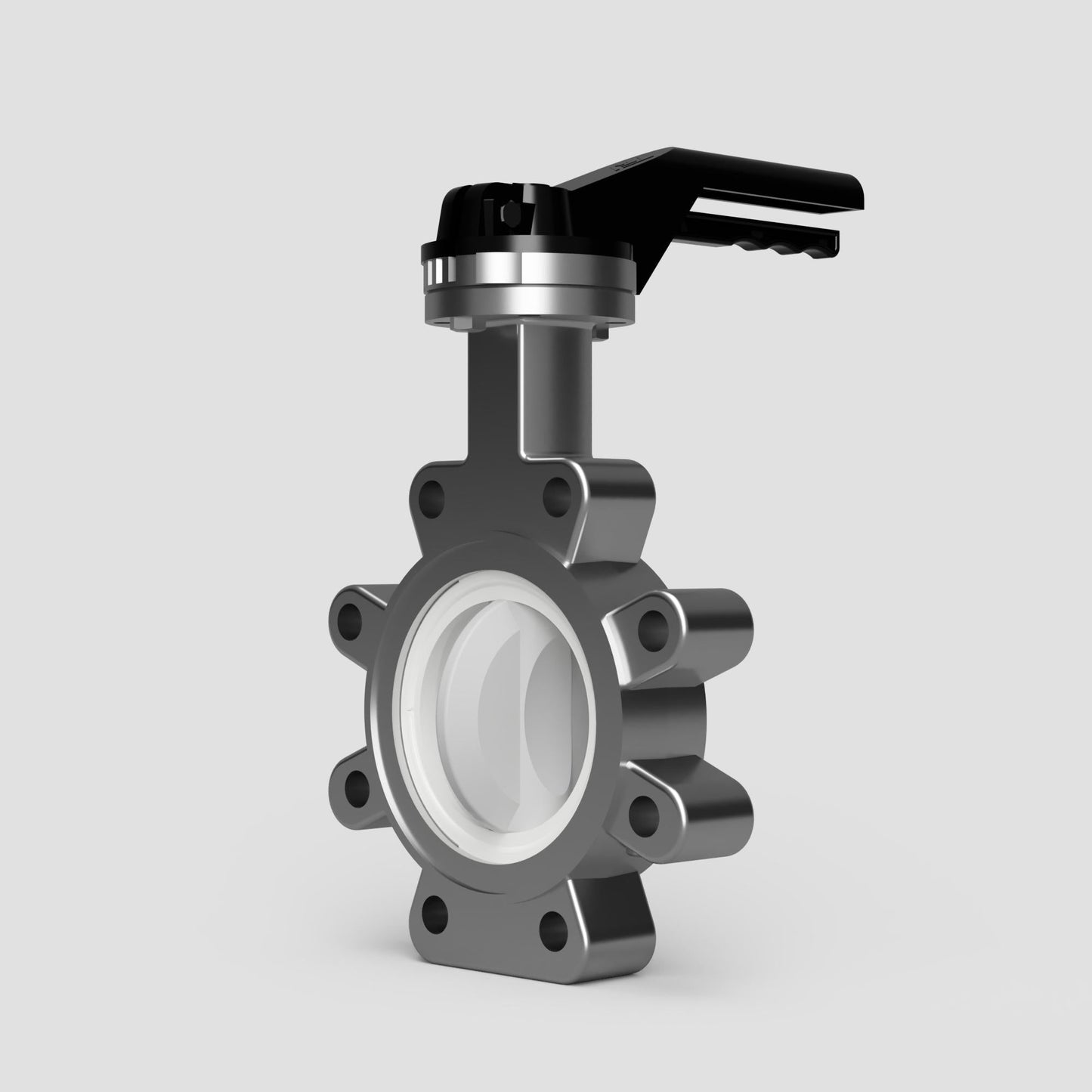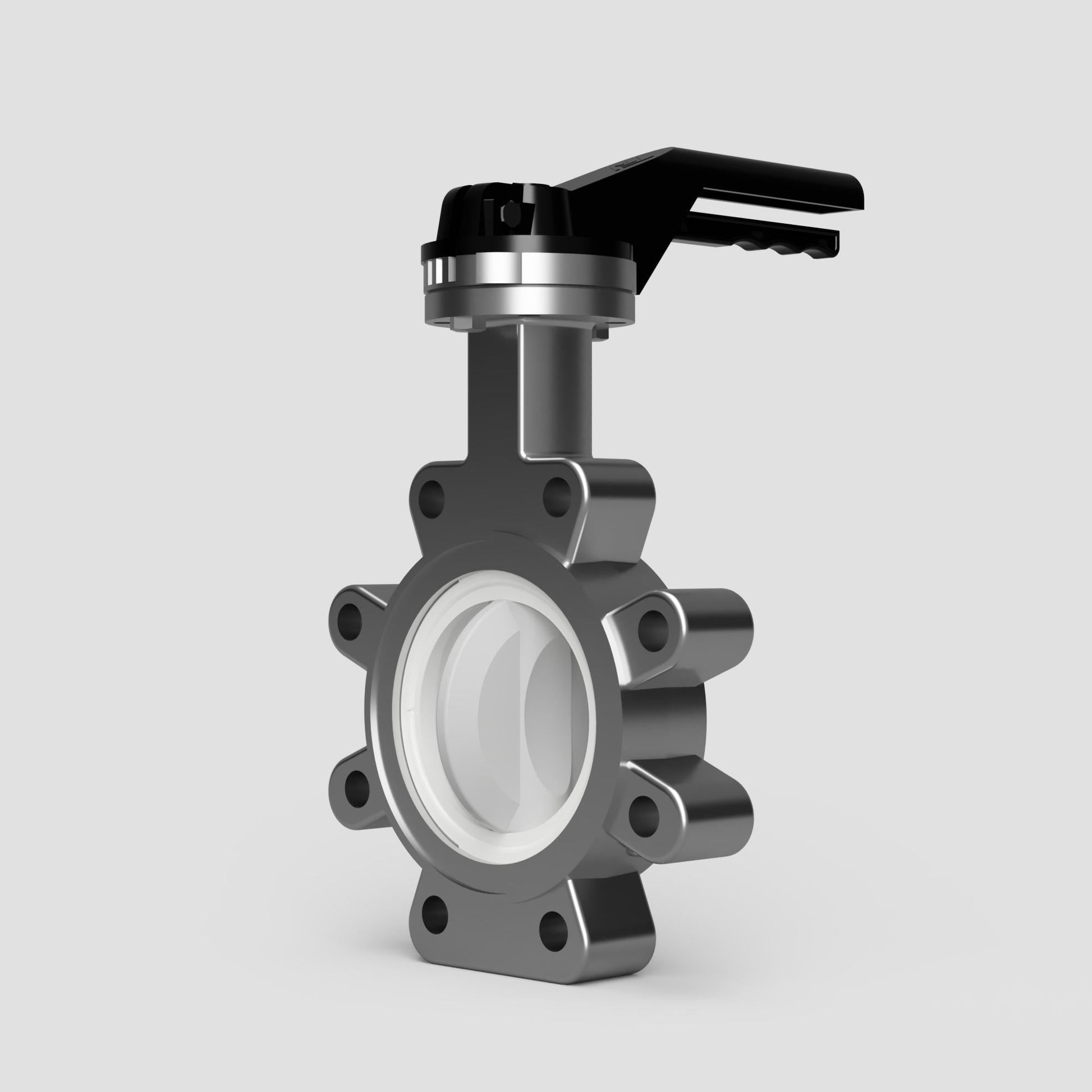Steam Valves
TTV PTFE Lined Lugged Stainless Steel Butterfly Valve
TTV PTFE Lined Lugged Stainless Steel Butterfly Valve
Couldn't load pickup availability
The TTV PTFE Lined Lugged Stainless Steel Butterfly Valve is a premium solution engineered for demanding industrial applications where durability, chemical resistance, and reliability are paramount. Featuring a PTFE lining, this valve excels in managing corrosive and aggressive fluids, making it ideal for a wide range of industries.
Key Features:
-
Superior Chemical Resistance: The PTFE lining offers unmatched protection against harsh chemicals, acids, and alkalis, ensuring long-lasting performance in corrosive environments.
-
Stainless Steel Construction: Built with a stainless steel body, this valve provides excellent durability and resistance to corrosion, making it suitable for rigorous industrial use.
-
Precision Engineering: The valve's design enables precise flow control with minimal operating torque, reducing wear and extending service life.
-
Reliable Sealing: The PTFE lining ensures a tight, leak-proof seal, essential for maintaining fluid integrity and preventing contamination in critical applications.
-
Versatile Applications: Suitable for use in chemical processing, pharmaceuticals, food and beverage, water treatment, and more, this valve's versatility and robust performance make it a trusted choice across industries.
-
Compact Design: The space-saving, lightweight design of the TTV PTFE Lined Lugged Butterfly Valve makes it ideal for installations where space is limited, without sacrificing functionality.
-
Ease of Installation and Maintenance: The lugged design allows for easy installation between flanges and simplifies maintenance, minimizing downtime and ensuring operational efficiency.
Applications:
-
Chemical Processing: Optimal for handling corrosive chemicals safely and effectively.
-
Pharmaceuticals: Ensures contamination-free fluid control in critical pharmaceutical processes.
-
Food and Beverage: Maintains hygiene standards while managing food-grade fluids and chemicals.
-
Water Treatment: Ideal for controlling treated water and chemicals in water treatment plants.
Specifications:
- Size Range: DN40 to DN300
- Pressure Rating: ANSI 150, PN16, PN10
- Lining Material: PTFE (Polytetrafluoroethylene)
- Body Material: Stainless Steel
- Disc Material: PTFE coated
- Connection Type: Lugged
The TTV PTFE Lined Lugged Stainless Steel Butterfly Valve is the ultimate solution for industries that demand high performance, reliability, and chemical resistance. Its robust design and superior materials ensure consistent, long-term operation, making it an essential component in any industrial fluid management system.
Share

FAQ's
What is the difference between a valve and an actuator?
What types of actuators are available?
The main types of actuators are:
Pneumatic actuators – use compressed air for fast, reliable operation.
Electric actuators – use electrical power for precise control.
Hydraulic actuators – use fluid pressure for high-torque applications.
Each type offers unique advantages depending on the environment, media, and system control needs.
How do I choose the right actuator for my valve?
To select the correct actuator, consider:
Valve type and torque requirement
Power source available (air, electric, or hydraulic)
Operating environment (temperature, humidity, hazardous area)
Control signal type (on/off or modulating)
Matching actuator torque and compatibility with the valve’s ISO mounting ensures reliable performance.
What are the main types of valves used in automation?
The most common valves in automated systems include:
Ball valves – for tight shutoff and quick operation.
Butterfly valves – for larger flow control with compact design.
Globe valves – for precise throttling and flow regulation.
Check valves – to prevent backflow.
Gate valves – for full bore flow isolation.
What’s the difference between a double-acting and spring-return actuator?
Double-acting actuators use air (or power) to both open and close the valve.
Spring-return actuators use air to open (or close) the valve, and a built-in spring to automatically return it to a safe position when power or air is lost — ideal for fail-safe operation.
How often should valves and actuators be serviced?
Regular maintenance intervals depend on operating conditions, but a good rule of thumb is to inspect every 6–12 months.
This includes checking for leaks, lubrication, seal wear, and actuator responsiveness to prevent unexpected downtime.

